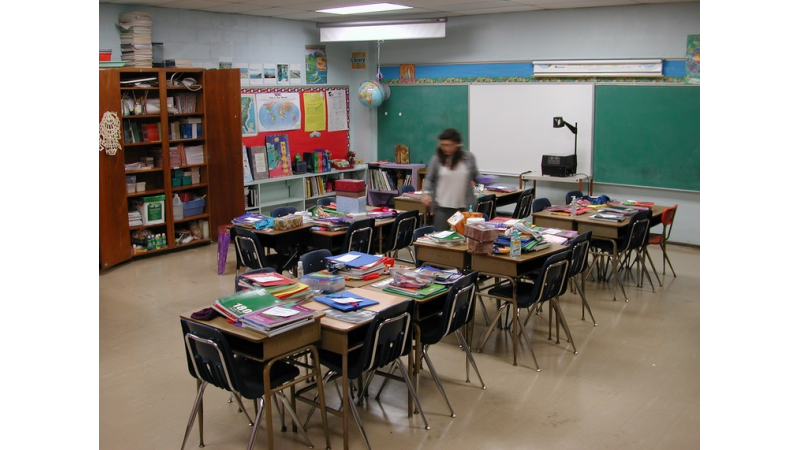 Last week, Maria Walther, Scholastic professional development author and first grade teacher, was featured on Reading Today Online. In the article Maria discusses midyear change. Read her post below:
Last week, Maria Walther, Scholastic professional development author and first grade teacher, was featured on Reading Today Online. In the article Maria discusses midyear change. Read her post below:
Happy New Year! Each year, educators are fortunate to have two opportunities to celebrate a new beginning. Filled with the anticipation and excitement of a brand-new school year, we often make resolutions to improve various aspects of our instruction. Now, as we ring in 2015, it’s a perfect opportunity to consider three small changes that will positively impact our students’ learning as we transform our literacy teaching to support them in meeting higher standards.
Strive for Balance
Balance. It’s something we all aim for in our personal lives—a balanced diet, a balanced budget, a balance between work and play. Maintaining balance is essential in the era of higher standards. I’ve heard of many questionable instructional practices and shiny packaged programs being mandated in the name of Common Core. It’s time to use common sense! Wise teachers, like you, know better than to abandon the research-based stages of gradual release and proven practices like read aloud, guided reading, and independent reading.
Now, more than ever, children need to hear rich literature read aloud on a daily basis. When carefully-selected literature is surrounded by collaborative conversations, listeners’ comprehension of complex text soars. Not only do we surround texts with discussion, but we also use them as mentor texts to demonstrate the strategic moves of proficient readers. Then, we scaffold as our readers try out what they’ve learned during guided practice. The descriptive feedback we provide, whether in small-guided reading groups or in individual conferences, is the key to nudging readers toward independence. Finally, to apply all of this learning in authentic context of self-selected books, students need ample time to engage in supported independent reading. Learners thrive in classrooms where caring educators know their readers, are knowledgeable about books, and can put the perfect book in each reader’s hands. With the words of great literature singing in their ears, students in balanced literacy classrooms are more likely to become confident, capable readers.
If you’re looking for more ideas or research to support the need for independent reading check out IRA’s recent Position Statement on Leisure Reading and Scholastic’s Open a World of Possible campaign.
For more common sense information on finding balance in the Common Core Era see IRA’s Literacy Implementation Guidance for the ELA CCSS or Regie Routman’s recent blog post on Scholastic Administrators Site .
Notice the World Around You
From your interactions with adults to conversations with children—words matter. No one educational researcher has had a greater influence on my thinking about words than Peter Johnston and his books Choice Words and Opening Minds.
From him, I’ve learned that every word I say in my classroom has a profound impact on the way students view themselves and view each other. For the new year, I challenge you to add one simple question to your daily conversations with students. Ask your students, “What do you notice?” Since this questions has no one “right” answer, it invites children who typically don’t participate to join the discussion. In addition, your avid noticers will find something interesting to share about any topic. In fact, just before Winter Break, we were studying the digraph “ch.” Here’s the brief noticing conversation we had:
Kira: I notice that the word Christmas begins with a “ch.”
Christian: So does my name!
Me: Hmmmm! What do you notice about the words Christmas and Christian compared to the ones we’ve written on our “ch” chart?
Aarav: They make the /c/ sound and the words on our chart make the /ch/ sound.
This simple, yet powerful, exchange would not have happened if my students weren’t avid noticers. As Peter Johnston says, “To notice—to become aware of—the possible things to observe about the literate world, about oneself, and about others can open conversations among students who are noticing different things” (Choice Words, 2004, p. 13).
“Let It Go!”
I know you love the penguin unit that you’ve been teaching for the last twenty years. I know because I used to teach one, too. I spent hours creating the activities and, over the years, bought a lot of penguin books for our classroom library. Certainly, if we’re going to focus on helping students achieve higher standards, we can’t do everything we’ve always done plus more. Because our instructional time is precious, we have to focus our attention on the learning experiences that will propel students toward higher standards, which may mean giving up the beloved penguin unit. In our school, we have meetings where we celebrate “brave abandonments.” We cheer and encourage teachers who make intentional decisions to abandon a routine, practice, or activity to make more instructional time for authentic and purposeful literacy experiences. In the words of Elsa from Frozen, “It’s time to see what I can do. To test the limits and break through.” Ask you ring in 2015, ask yourself, “Can I let something go to make more room for meaningful literacy experiences?”
What other small changes would you suggest to your colleagues as they transform their literacy instruction to meet higher standards? I would love to hear them.





